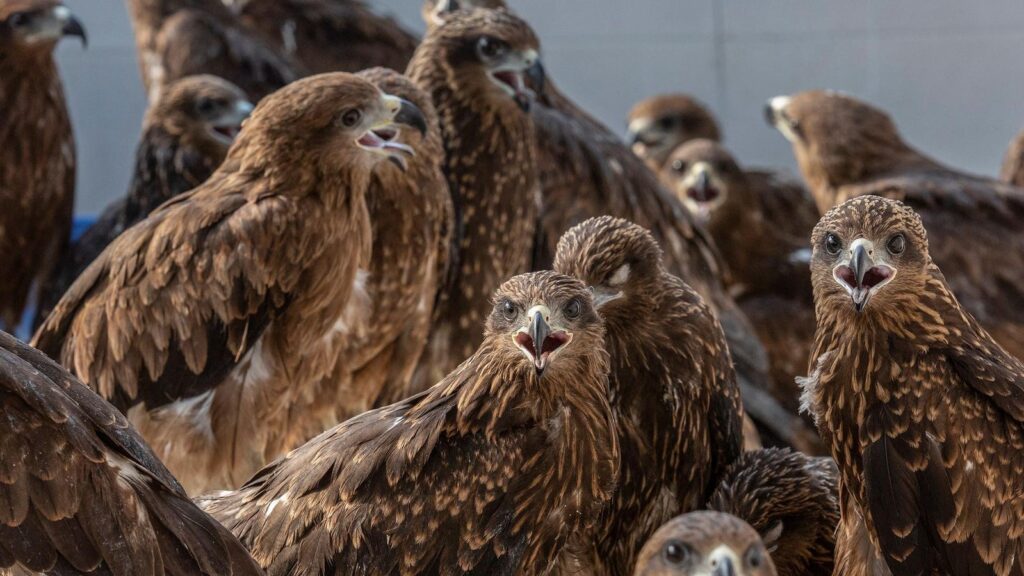
Raptors, commonly referred to as “birds of prey,” are not as widespread as their more docile avian counterparts like sparrows or starlings. However, among these formidable hunters, one species stands out as the most abundant: the black kite. With a global population exceeding 5 million, the black kite is the world’s most numerous raptor, thriving across Europe, Asia, Africa, and Australia.
The black kite’s success is attributed to its adaptability and opportunistic feeding habits. Unlike many specialized raptors, black kites are versatile in their diet, consuming carrion, small mammals, insects, and even food stolen from other birds. This flexibility allows them to inhabit diverse environments, from open countryside to bustling urban areas.
The Black Kite: A Master of Adaptation
Black kites belong to the family Accipitridae, which includes hawks, eagles, and other kites. Their ability to thrive in various habitats, from wetlands to cityscapes, sets them apart from many other raptors. In urban areas, they are often seen scavenging at garbage dumps and marketplaces, showcasing their adaptability and intelligence.
According to a 2008 study published in the Journal of Raptor Research, black kites in Rome frequently engage in kleptoparasitism, a behavior where they steal food from other birds. The study found that kites stole food in over 75% of observed feeding attempts, primarily targeting gulls. This strategy becomes more prevalent as kite numbers increase, particularly during the breeding season.
Social Behavior and Migration Patterns
Unlike many solitary raptors, black kites are highly social. They often gather in large groups, especially at communal roosting sites where thousands may congregate overnight. These gatherings provide safety and opportunities for social learning.
During migration, black kites form massive flocks that can number in the thousands, creating spectacular sights for birdwatchers. Their long wings and forked tails grant them exceptional maneuverability, enabling them to ride thermal currents and conserve energy over long distances.
Research published in Ethology Ecology & Evolution and the Journal of Avian Biology reveals that black kite movement patterns vary by region. Some populations migrate vast distances, while others, particularly in India and Australia, are year-round residents.
Genetic Diversity and Evolutionary Insights
Genetic studies have uncovered significant diversity among black kite populations. DNA analyses indicate distinct haplogroups in Europe, northern Asia, India, and Australia, suggesting historical separations and limited gene flow. A 2024 study in Zootaxa found that Indian and Australian kites likely diverged at the end of the last Ice Age, highlighting their complex evolutionary history.
Interestingly, African populations, especially the yellow-billed kite, are genetically distinct enough to be considered a separate species by many researchers. These findings underscore the black kite’s rich evolutionary narrative shaped by geography and climate shifts.
Conservation Status and Future Prospects
While many raptors face threats from habitat loss and pollution, the black kite’s population remains stable. Their ability to exploit human-altered landscapes has been a key factor in their success, contrasting sharply with the decline of other raptor species in urbanized areas.
The black kite’s story is a testament to the power of adaptability. Though not the rarest or most iconic raptor, its resilience and global reach make it unparalleled in the avian world. As researchers continue to study these birds, they provide valuable insights into population dynamics and migratory behavior on a global scale.
For those fascinated by remarkable birds, the black kite offers a unique glimpse into the world of raptors, where adaptability and survival go hand in hand.




